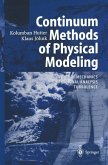The term "dislocation" is used in several different senses in the literature of mechanics. In the elassic work of VOLTERRA, WEINGARTEN, and SOMIGLIANA, it refers to particular solutions of the equations of linear elasticity, in which a con tinuous field of strain does not correspond, globally, to a continuous field of dis placement. The configuration of the body so obtained, even when that body is free of all load, is subject to interior stress that does not vanish, and in general no deformation of the body as a wh oIe can bring it into a stress-free configuration. Nevertheless, if any sufficiently sm all part of the body is considered by itself, a configuration for it in which the stress is everywhere zero may be found at once. In this work constitutiL"e assumptions provide the basic data. These consist in prescribed stress-free configurations for each material point and in prescribed elastic moduli governing the response to deformation from the stress-free configuration at eachmaterial point. Everything follows from these data, ineluding the dislocations present, if any. In particular, the common boundary-value problems of linear elasticity may be set and solved for the dislocated body.
Hinweis: Dieser Artikel kann nur an eine deutsche Lieferadresse ausgeliefert werden.
Hinweis: Dieser Artikel kann nur an eine deutsche Lieferadresse ausgeliefert werden.








